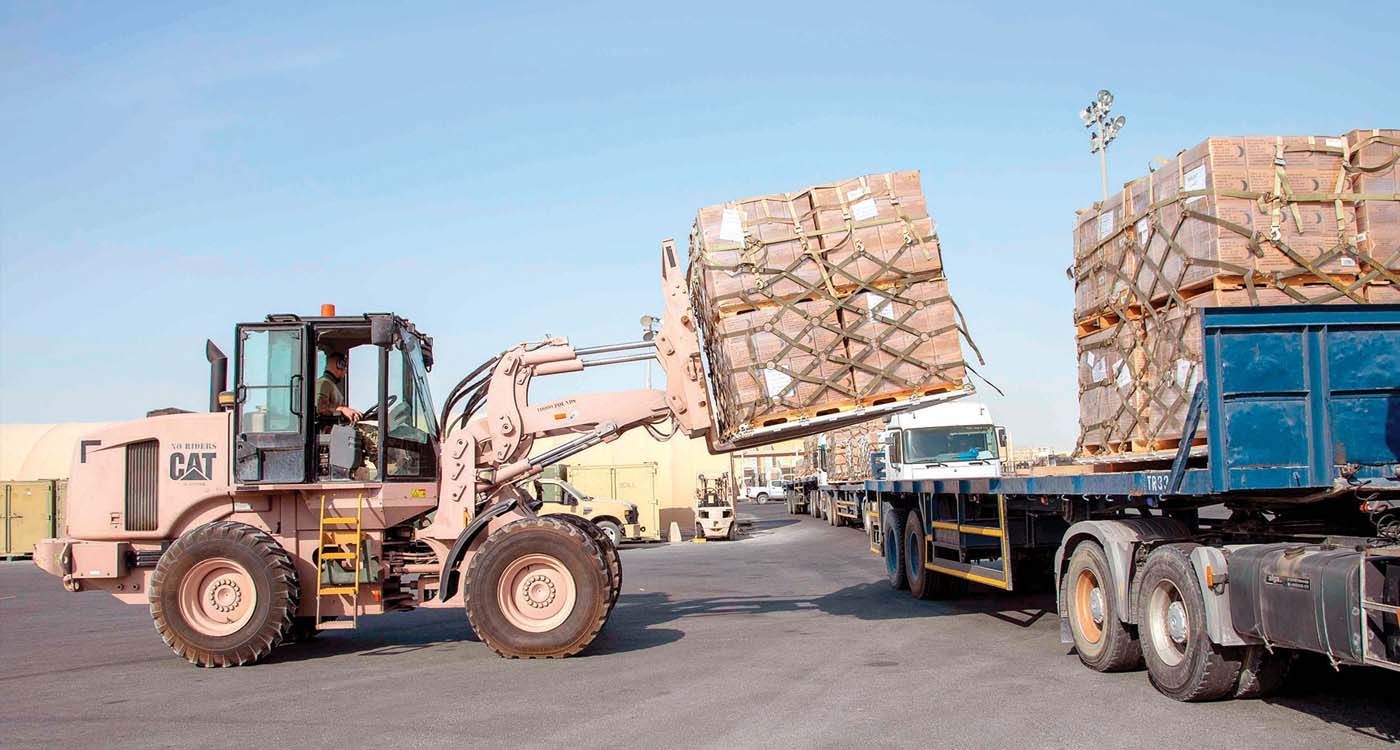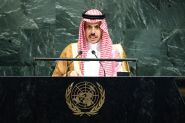
Since the conflict between Israel and Hezbollah intensified on September 23, Lebanon has been facing an unprecedented humanitarian crisis. Massive destruction of neighborhoods and residential areas, with more than 1.2 million people internally displaced… According to the latest human toll, dated October 30, 2024, 2,792 people have been killed and 12,772 injured “since the start of the Israeli offensive.”
The cost of the war in Lebanon is estimated to exceed $20 billion, according to the latest report (dated October 20) from the Independent Task Force for Lebanon (ITFL). A heavy burden to bear.
To support Lebanon through this crisis, which adds to the economic challenges stemming from the 2019 crisis, many countries and international organizations have mobilized and continue to do so, in order to meet the urgent needs of the Lebanese population.
While the management of this aid depends closely on the crisis management committee led by caretaker Environment Minister Nasser Yassine, the committee faces numerous challenges. It is working to address immediate needs quickly while laying a foundation for sustainable support in close collaboration with international humanitarian partners.
Aid delivery
The government emergency committee is tasked, among other duties, with coordinating humanitarian aid from numerous states to support the country amid war and crisis. However, managing and delivering these funds is not without obstacles. Currently, the distribution process is often hindered by logistical and security challenges. Additionally, many displaced persons are not registered in formal reception centers, making it difficult to determine the exact number of beneficiaries. Although efforts are being made for fair distribution, limited resources and transparency could challenge the tracking of received and distributed aid, especially since actual needs far exceed available resources. To address these issues, the emergency committee has established a system to ensure coordination and fair distribution of aid.
According to an informed source, the committee’s approach includes assessing the most vulnerable groups (civilians affected by war, the wounded, internally displaced persons, etc.) across different regions to determine the allocation of resources, which include food, medicines and essential equipment.
In collaboration with international organizations (such as the United Nations, the Red Cross and other NGOs), it also coordinates with donor countries’ governments to plan and distribute resources according to priority needs. The committee coordinates the logistics of humanitarian convoys to ensure aid reaches the designated regions. According to the source, it often works with local and international agencies to secure humanitarian corridors. Field teams distribute aid directly to people or via distribution centers, especially in hard-to-reach areas.
To ensure fair distribution and prevent misappropriation, the committee has implemented an aid monitoring system. Regular reports are prepared for donors and partners, providing transparency regarding the use of funds and resources received, said the source.
In addition to this mission, “the committee is striving to plan medium-term recovery measures, including infrastructure reconstruction, health and education services support, and community resilience efforts for affected populations,” states the same source.
International aid: where does it come from?
Internationally, the European Union has increased its support to Lebanon with an additional €30 million, bringing to over €100 million the total worth of its humanitarian aid for 2024. These funds are aimed at providing food aid, shelter and medical care.
The UN World Food Programme (WFP) has launched emergency operations to provide food to around one million displaced people. On September 29, WFP announced that it has been “working with donors and partners for several months to stockpile food supplies in strategic locations across the country.” It has also called on the international community to “mobilize resources,” with $105 million needed to address emergency needs by the end of 2024.
On October 3, the World Bank announced the reallocation of $250 million in aid for Lebanon, initially intended for renewable energy development, towards emergency assistance for people displaced by Israeli bombings in the south of the country. This initiative has been coordinated closely with the World Bank's development and humanitarian aid partners.
France has also intensified its humanitarian and diplomatic support. At the International Conference in Support of Lebanon held in Paris on October 24, more than $1 billion was raised. Approximately $800 million of this amount is earmarked for humanitarian actions, such as food and medical supplies, and for supporting damaged medical infrastructure. Additionally, $200 million has been allocated to the Lebanese Army to bolster its capabilities in maintaining internal security and aiding civilian protection operations.
The United Kingdom has also provided substantial assistance to Lebanon. In October, the British government announced an additional £10 million to provide shelters, clean water, healthcare and hygiene products. This follows a previous humanitarian aid package of £5 million through UNICEF to ensure access to healthcare, clean water and sanitation. Moreover, the UN Central Emergency Response Fund (CERF), of which the UK is a significant donor, announced £7.6 million in aid to address urgent needs related to the conflict and population displacement in Lebanon.
The United States has also increased its humanitarian aid to Lebanon. In October, the US government announced nearly $157 million in assistance to support Lebanese people affected by the conflict, as well as refugees and internally displaced persons. This funding is allocated for essential needs, including food, clean water and medical care for those in extreme vulnerability. The US works with local and international agencies to ensure rapid and efficient resource distribution while coordinating evacuation operations for its citizens in case of an escalation in the conflict.
Russia has also sent humanitarian aid, including food supplies, medicine and generators to support Lebanon’s damaged infrastructure. The Russian Ministry of Emergency Situations reported that a private Il-76 aircraft delivered 33 tons of humanitarian aid, including food, medicine, tents, basic necessities and 80-kilowatt generators. Russian authorities, through their embassy in Beirut, are working with the Lebanese government to ensure effective aid distribution in areas heavily impacted by the ongoing conflict, particularly in southern Lebanon and around Beirut, where the humanitarian impact is especially severe.
Brazil contributed to this humanitarian effort as well. The South American country sent 11 tons of medical supplies to Lebanon through the Lebanese Consulate General in Rio de Janeiro, which works in collaboration with a crisis cell it formed. These donations were initiated by the consulate in Rio, which sought the support of pharmaceutical laboratories, who responded immediately to the call.
Non-governmental organizations, such as Solidarités International, distribute food and clean water, rehabilitate water points, and provide shelter in less conflict-exposed areas. However, some regions, like the Beqaa Valley, remain challenging to access due to safety risks.
Regional mobilization
Regionally, several countries have initiated humanitarian aid projects for Lebanon, including Saudi Arabia, Qatar and Oman. The King Salman Humanitarian Aid and Relief Center (KSRelief) launched an air bridge to channel aid to Lebanon in October, in line with Saudi leadership directives. Saudi planes arriving in Beirut carried urgent medical supplies, relief goods and food.
Meanwhile, Qatar sent 50 tons of medical aid to Lebanon, while Oman delivered 40 tons of medicine and humanitarian aid on October 14 through its Charitable Authority.
The United Arab Emirates has also ramped up support to Lebanon. In October 2024, President Sheikh Mohammed bin Zayed launched a national campaign, “UAE is with you, Lebanon,” pledging $100 million in emergency aid to the country. This includes the dispatch of an aircraft carrying 40 tons of essential medical supplies, marking the first in a series of deliveries to meet urgent needs in Lebanon.
Additionally, Dubai’s humanitarian hub has shipped approximately 100 tons of relief supplies, including medical supplies and shelter equipment, in collaboration with international organizations such as the World Health Organization, UNICEF and the Red Crescent. Thousands of Emirati volunteers and organizations have contributed to packaging and distributing this aid.
In a show of support, Pakistan has provided Lebanon with 617 tons of aid (including medical supplies, relief materials, shelter, food and essentials for displaced persons).




Comments